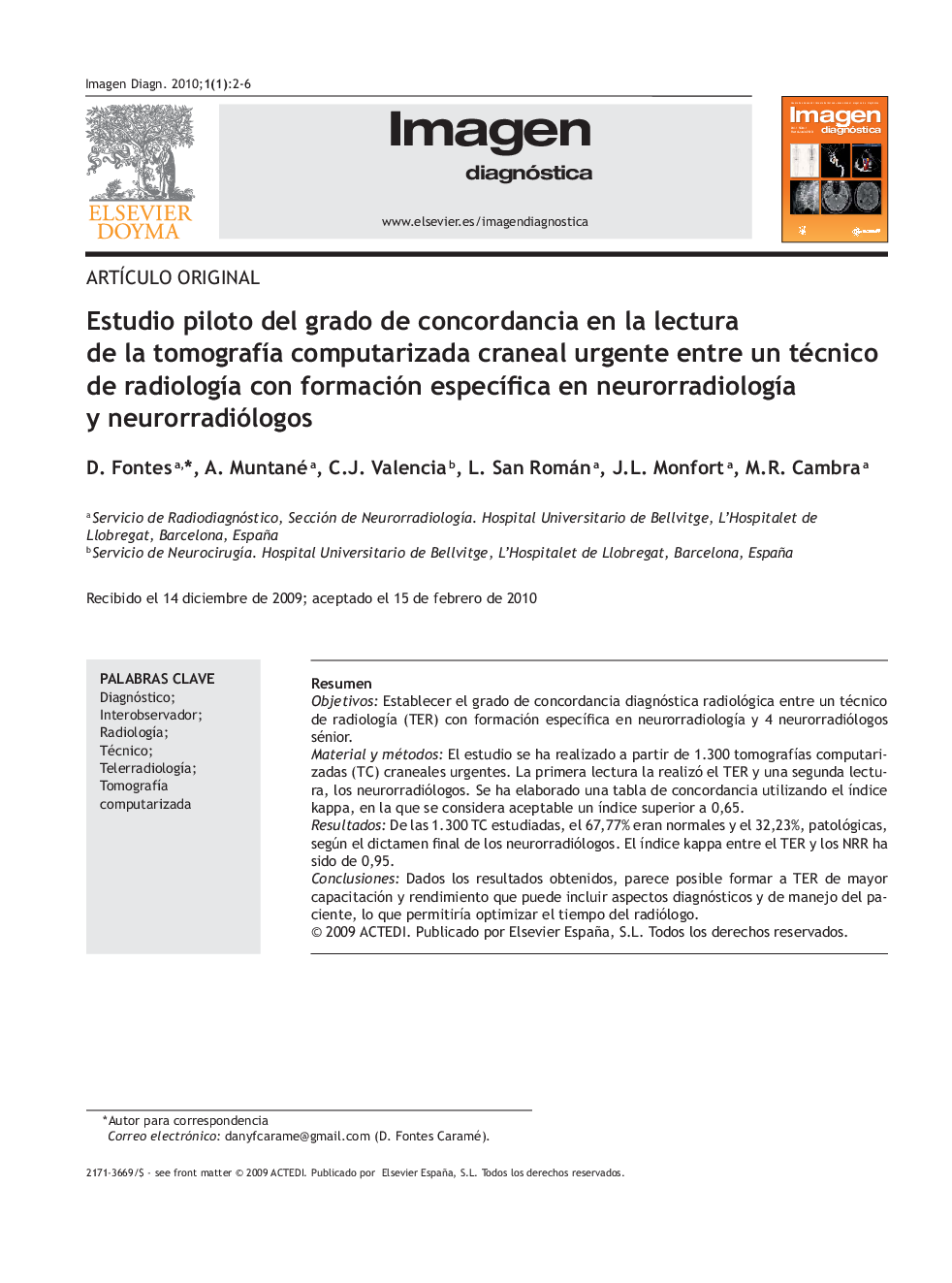| Article ID | Journal | Published Year | Pages | File Type |
|---|---|---|---|---|
| 2736951 | Imagen Diagnóstica | 2010 | 5 Pages |
ResumenObjetivosEstablecer el grado de concordancia diagnóstica radiológica entre un técnico de radiología (TER) con formación específica en neurorradiología y 4 neurorradiólogos sénior.Material y métodosEl estudio se ha realizado a partir de 1.300 tomografías computarizadas (TC) craneales urgentes. La primera lectura la realizó el TER y una segunda lectura, los neurorradiólogos. Se ha elaborado una tabla de concordancia utilizando el índice kappa, en la que se considera aceptable un índice superior a 0,65.ResultadosDe las 1.300 TC estudiadas, el 67,77% eran normales y el 32,23%, patológicas, según el dictamen final de los neurorradiólogos. El índice kappa entre el TER y los NRR ha sido de 0,95.ConclusionesDados los resultados obtenidos, parece posible formar a TER de mayor capacitación y rendimiento que puede incluir aspectos diagnósticos y de manejo del paciente, lo que permitiría optimizar el tiempo del radiólogo.
ObjectivesTo determine the concordance between a technologist with specific training in neuroradiology and four senior neuroradiologists in the interpretation of urgent cranial CT examinations.Material and methods1300 urgent cranial CT examinations were interpreted first by the technologist and then by the radiologists. We elaborated a concordance table using the Kappa index, considering a concordance greater than 65% acceptable.ResultsOf the 1300 CT examinations, 67.77 % were normal and 32.23% were pathological according to the neuroradiologists’ interpretation. The Kappa index between the technologist and the neuroradiologists was 95%.ConclusionsIt seems possible to train technologists to perform some aspects of diagnosis and patient management to optimize radiologists’ time.
